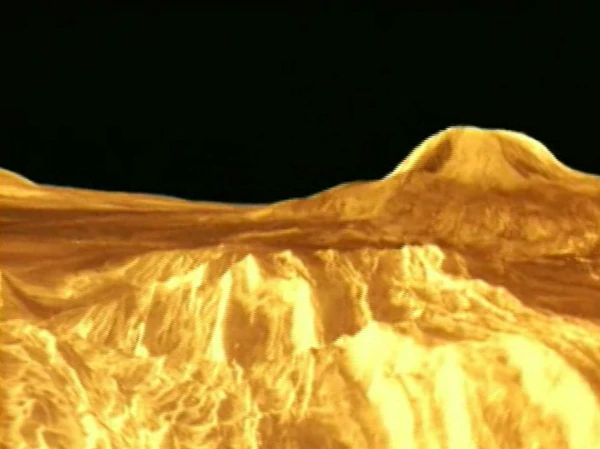
Image: The Magellan space probe (United States, 1989), revealed to us a fairly realistic orange color of the surface of the planet Venus.
• Dense atmosphere: Venus has a dense atmosphere, composed mostly of carbon dioxide, with clouds of sulfuric acid. Atmospheric pressure at the surface is about 90 times greater than that of Earth.
• High surface temperature: Due to its dense atmosphere, the greenhouse effect is very pronounced on Venus, making it hotter than Mercury, the planet closest to the Sun. The surface temperature of Venus is around 460°C, making it the hottest planet in the solar system.
• Retrograde rotation: Venus rotates on itself in a direction opposite to that of most other planets in the solar system, a movement called retrograde rotation.
• Day longer than year: Venus' rotation period is 243 days, while its orbital period around the Sun is 225 days. This means that a day on Venus is longer than its year.
• Short period of revolution: Venus orbits the Sun at an average distance of 108 million kilometers, which puts it about 0.7 astronomical units (AU) from the Sun. Its period of revolution is only 225 Earth days.
• Little seasonal variation: Due to its nearly circular orbit around the Sun, Venus has little seasonal variation.
• High reflectivity: Venus has high reflectivity, which means it reflects a large amount of sunlight. This is why it is often visible in the night sky as the brightest star after the Moon.
• No moon: Venus has no natural moon.
• Varied topography: Data collected by NASA's Magellan mission showed that Venus has a varied topography, with volcanoes, mountains, and plains. The planet also has impact craters, although these are fewer than on Mercury.
• Absence of Magnetic Field: Unlike Earth, Venus does not have a global magnetic field, although it does have local magnetic fields.
Venus is covered with a very thick atmosphere whose mass is 90 times the mass of the Earth's atmosphere, the atmospheric pressure is equivalent to that which prevails at 1,000 meters deep, in our oceans. Learn more.
Definition of the word planet (August 24, 2006):
"A planet is a celestial body which is in orbit around the Sun, which has sufficient mass so that its gravity overcomes the cohesive forces of the solid body and maintains it in hydrostatic equilibrium (spherical shape), and which has eliminated any body moving in a near orbit".